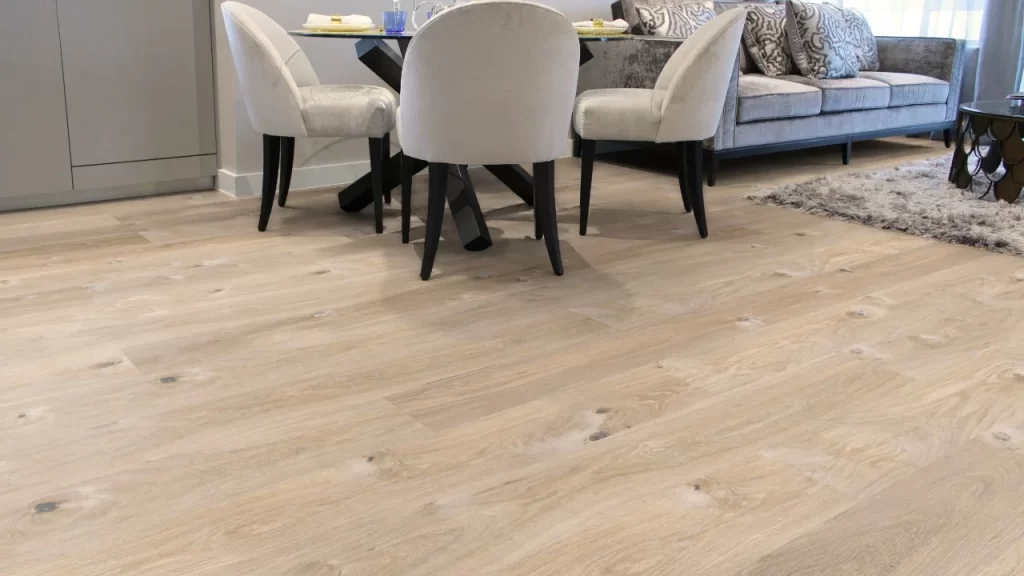Flooring and Indoor Air Quality Impact on Health

The selection of floors that make for a healthy indoor environment is crucial. A flooring expert can help identify options that reduce health risks and protect the planet.
Air pollution is greatly increased just by foot traffic, particularly when floors are being polished. It has been proven through research that carpets resuspend more dust particles sized 1.0-10 than any other hard surface material does.
Carpets
Carpets and rugs can collect various pollutants and allergens such as dust mites, pet dander, cockroach allergens, lead particles from lead paint, mold spores, particle pollution and cleaning product chemicals which become airborne during renovations or vacuuming or simply walking across them.
Previous scientific studies on carpet dust re-entry have mainly focused on parameters like indoor relative humidity (RH), human activities and type of test particles used (actual building dust or ISO 12103-1 test dust). Such studies gave divergent results without giving dependable information about carpet type/design/age and ventilation rates though.
Epidemiological investigations have shown associations between carpet floors with irritative symptoms or fatigue syndrome but some climate chamber tests indicated higher levels of interleukin-8 (IL-8)and monocyte chemoattractant protein-1 (MCP-1)among workers exposed to new carpeted floors which supports further assessment of alternative floor covering materials before deciding on whether or not to use carpets in office areas; hence the need for careful evaluation prior to selecting any specific form of floor covering as an office solution.
Vinyl
Insect parts, pollen grains,pollen grains,pollen grains,pollen grains,Pet dander, pet dander , pet dander ,Pet Dander Pet DanderPet DanderPollenPollenPollenPollenDead skin cells dead skin cells dead skin cellsdead skin cells dead skin cells Mold spores mold spores mold sporesmold spores Mold SporesMold SporesMold SporesAll these pollutants are on floors before they become air pollution again. These types of contamination may appear harmless initially but they can pose serious health risks for us and cause persistent damage to our bodies over time.
Some vinyl flooring products have chemicals in them that off-gas, which leads to poor indoor air quality (IAQ) and adversely affects human health. Infants, young children and people with respiratory problems or weak immune systems are especially vulnerable to this type of toxicity.
Unlike carpeting, vinyl plank floor is non-porous and moisture resistant so it doesn’t foster mold growth which could compromise IAQ and trigger respiratory problems such as asthma attacks; besides it requires less chemical cleaners than other alternatives thus making it healthier for those who have allergies or sensitivities related to cleaning agents used in buildings where they live/work/school etcetera. Also some Vinyl Plank Products feature reduced Voc Emission levels helping reduce exposure risk from harmful solvent off-gassing; moreover regular care/maintenance along with ventilation helps further achieve lower concentrations.
Tile
Tile offers an opportunity to create healthy living spaces without sacrificing aesthetics or design.
Tile contributes nothing to the growth of microorganisms, neither does it release any gases or particles that can harm indoor air quality (IAQ). In addition, tile is usually free from formaldehyde – an odorless chemical present in construction materials like particleboard and plywood as well as glues/adhesives often used during installations which may irritate skin/eyes/throat/nose/lung tissues causing respiratory illness including cancer after long-term exposures; hence a healthy choice for homes where people spend more time indoors.
Cork
Cork flooring doesn’t have harmful phthalates — a plastic softener — or PVC emissions that release volatile organic compounds (VOCs), unlike vinyl. Additionally, cork’s thermal mass prevents the extremes of heating and cooling which reduce demands at peak times and even out temperature fluctuations – this saves energy on your part while providing energy savings through energy efficiency improvements over other floorings judged by widely accepted appraisal methodologies against them. Among green options, cork also has one of the lowest embodied carbon footprints.
Wood
People spend 80-90% of their time indoors, where they can experience negative health effects. Headaches, fatigue, and trouble concentrating have all been linked to poor air quality; likewise asthma attacks can be triggered by inadequate ventilation alone.
Most pollutants that affect indoor air quality originate from natural sources such as radon gas or mold spores; however combustion byproducts from burning wood or coal for heat may also contribute along with carbon monoxide produced when furnaces malfunction as well as volatile organic compounds found in paints, cleaning products and insecticides which release into the atmosphere during use or storage.


